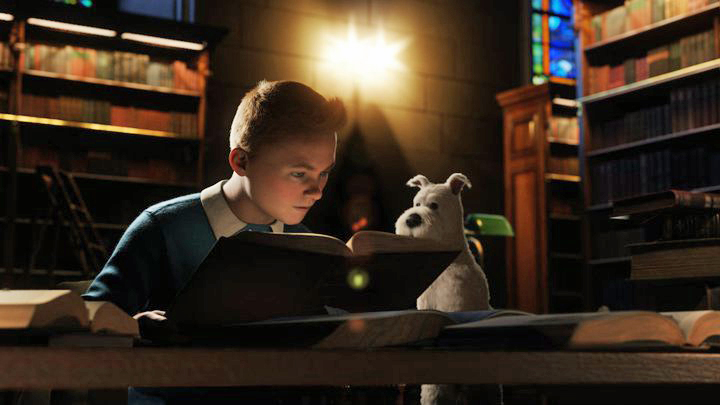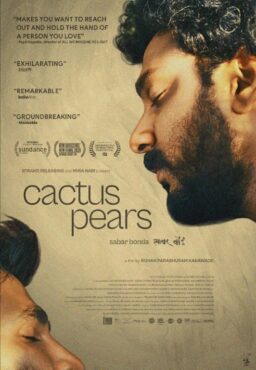Q: I couldn’t let Marlon Brando’s passing go by without telling this story. Over 20 years ago when I was just starting out as a teacher in Chicago, I had a student who loved Brando. As a writing assignment, I’d promised to find addresses for the stars the kids liked, so they could write to them and see who answered.
The kid was overjoyed. She told Brando they shared a birthday, and that she wanted to become a writer, but couldn’t convince her parents she had the goods. The Brando fan received a hand-written letter — one of the sweetest, most encouraging letters a teen could ever receive — about dreams and what really matters in life. And a year later, she received, on her birthday, a hand-signed card, asking her if she was still writing, and for a sample of something she’d written. I’ve never forgotten it. Brando was and will always be one of my idols, too, and that’s how I’ll remember him: As I saw him in the eyes of that teenage girl, so many years ago.
Cynthia Dagnal Myron,Tucson, Ariz.
A: One of the reasons Brando was a great star was that he never followed the form book, but lived his life spontaneously, personally and sincerely.
Q. I am insulted by Columbia TriStar Home Entertainment’s “innovative process” called “Color+B&W,” intended “to broaden the appeal of classic black-and-white films and introduce them to a new generation of viewers.” This egregious process, which makes its debut on two “Three Stooges” DVDs being released Aug. 10, also includes a “ChromaChoice” feature, which “allows viewers to toggle between the original black-and-white version of a film and its colorized version in a seamless manner using the DVD remote.”
Supposedly this newfangled attempt at colorization is further authenticated through research involving original film elements, props, cloth swatches, etc., found in Columbia’s archives. “Finally,” states the press release, “through collaboration with West Wing Studios whose talented artists have years of experience in color designing, the highest level of historical accuracy is achieved in the images.”
When will these idiots in charge of precious studio libraries ever learn that any kind of colorization — even optional — is an insult to the legacy of black-and-white film? Did anyone learn a lesson from Ted Turner’s dubious precedent?
Jeff Shannon,Lynnwood, Wash.
A. Colorization is a form of vandalism. A b&w movie isn’t lacking something, it’s adding something: The world is in color, so we get that for free, but b&w is a stylistic alternative, more dreamlike, more timeless.
Fred Astaire hated color because it distracted from the pure form of his dancing. One could make the same argument about the Stooges, who in their own way are as pure and classic as Astaire. The Columbia TriStar claim that they’re “researching” the original colors of the costumes, props, etc., is hilarious, since colors were selected for how they photographed in b&w, not for how they really looked. If they want to be consistent, all of the actors’ faces will be light green, since greenish makeup was used because it photographed better.
Q. I read in a Reuters news article that you, Richard Roeper, MPAA president Jack Valenti and executives from Lion’s Gate and IFC Films had a conference call debating the use in “Fahrenheit 9/11” ads of Roeper’s quote, “Everyone in the country should see this film.” Valenti upheld the MPAA ruling against the quote because the film was rated R, meaning not everyone CAN see it. Why couldn’t Roeper have just contributed a new quote, right then and there, such as, “Everyone who can should see this film”? Wouldn’t that have satisfied all parties?
Chris Tong, Kelseyville, Calif.
A. Maybe, but it wasn’t what Roeper said, and we don’t supply quotes for ads; they must come from words actually used in our reviews. I had a similar experience after my “Whale Rider” review, which said, “Take the kids and they’ll see a movie that will touch their hearts and minds.” The MPAA objected to that quote in the ads. They said a film with a PG-13 rating can’t be marketed to children — even though I said “take” the kids, not send them in alone.
As Jack Valenti explained the “Fahrenheit 9/11” ruling to the rest of us on the conference call, I realized he would win the argument, because the studios have indeed signed an agreement to follow the MPAA’s rules and regulations, which clearly say that films rated PG-13 or older cannot be advertised for the whole family. The MPAA cannot be blamed for enforcing the rules, but perhaps the studios should reevaluate the guidelines.
Q. In response to Corey Slack’s complaint in last week’s Answer Man that you should not have tipped off the identity of the werewolf in your review of “Harry Potter and the Prisoner of Azkaban“: You missed the point. We are not masters of Latin, nor are we as schooled in Latin roots. But when you connected the word “lupus” to the werewolf, there isn’t a moron (or child) alive who wouldn’t realize you were talking about Professor Lupin, mentioned a few lines before. You ruined the surprise with a comment about as cryptic as an exit sign.
Fiji Hebden,Rutgers University,New Brunswick, N.J.
A. But … but … the movie gives itself away, by calling him Professor Lupin! You are at Rutgers, but have never heard the word “lupine”?
Q. I read your review of “Fahrenheit 9/11” and I was very disappointed that at NO POINT did you question Moore’s political agenda and the reality of all of the film’s claims. This seems to be promoting Moore’s agenda rather than providing an objective review of the film. I personally hate films that are obviously motivated by a political agenda; it causes me to question how much is reality and how much is exaggerated or fabricated. I don’t have the time to review every fact and determine which is real and which is a lie or exaggeration. Moore is obviously a brilliant filmmaker, but I wish he could just do a documentary that focuses on an event, rather than taking an event to promote his political opinions.
Bill Meyers, White Lake, Mich.
A. Moore’s film comes labeled as partisan and subjective. Were you equally inspired to ask “how much is reality and how much is exaggerated or fabricated” when the Bush administration presented Saddam’s WMDs as a fact? I declared my own political opinion in the review and made it clear I was writing from that viewpoint. It’s opinion. I have mine, you have yours, and the theory is that we toss them both into the open marketplace of ideas.
Q. In your review of “Spider-Man 2,” you note: “One of the keys to the movie’s success must be the contribution of novelist Michael Chabon to the screenplay; Chabon understands in his bones what comic books are, and why.”
While this may be true, and Chabon contributed a draft, the story that was used should be credited to Alfred Gough & Miles Millar. As they stated in an interview: “All the writers contributed something, but to us there were three versions of this movie: the one that we wrote, one that David Koepp wrote, and one that Michael Chabon wrote. If you look at all three, ours was absolutely the one they went with. Michael Chabon, whom we’d never met, called us and told us that he was outraged. He thought we deserved credit.”
I don’t mean to write off Chabon’s contributions to the story, but rather to raise notice for two writers who also elevated the superhero genre on TV, with “Smallville.”
Adam Lenhardt,Slingerlands, N.Y.
A. Screenplay credits often conceal and obscure where the real credit should go. Knowing Chabon’s wonderful novel, I singled him out, and am pleased to have your input about Gough and Millar.











